History
Andrew Carnegie established the Pittsburgh, Bessemer & Lake Erie Railroad Company (PB&LE) in 1897 to carry iron ore from Conneaut, Ohio, on Lake Erie to Carnegie Steel Company plants in and around Pittsburgh, Pennsylvania. Forming a link between his plants and the Great Lakes ore boats arriving in Conneaut from Minnesota's Missabe Iron Range, the railroad was part of Carnegie's plan to form a complete, vertically integrated steel company.
The core of the PB&LE was formed by two small lines that Carnegie absorbed: the Pittsburgh, Shenango and Lake Erie Railroad, and the Butler & Pittsburgh Railroad. The company was renamed the Bessemer & Lake Erie Railroad (B&LE) in 1900. Carnegie Steel had an exclusive 999 year lease to the B&LE. This lease was acquired by United States Steel (USS) when that company acquired Carnegie Steel in 1901. In 1988 the B&LE was made a part of a USS subsidiary, Transtar, Inc., and subsequently became a part of Great Lakes Transportation, LLC in 2001. Since 2004, the B&LE has been operated as a unit of the Canadian National Railway.
Iron ore was and continues to be the railroad's major freight commodity. The ore is offloaded from lake freighters at Conneaut directly into strings of hopper cars. About ten percent of the ore is stored on-site so that car-loading operations can continue during the winter months when the lake freighters are frozen out. The iron ore is transported to the steel mill at Butler and to the interchange tracks at North Bessemer. From there, trains operated by the USS-owned Union Railroad take the ore to mills in Pittsburgh.
The B&LE transports a large amount of bituminous coal—the type found in western Pennsylvania—both in its natural form and as coke. The coal originates from mines located along or near the railroad. Coal products are used at the regional steel mills, or offloaded at Conneaut and transferred to freighters bound for ports on both sides of the Great Lakes. Coal is also stored at Conneaut during the winter-freeze months to keep the mines, and the railroad, productive.
The railroad also transports limestone, which is used in the steelmaking process, as well as a small amount of general freight. It also operated a modest passenger service.
Route Map
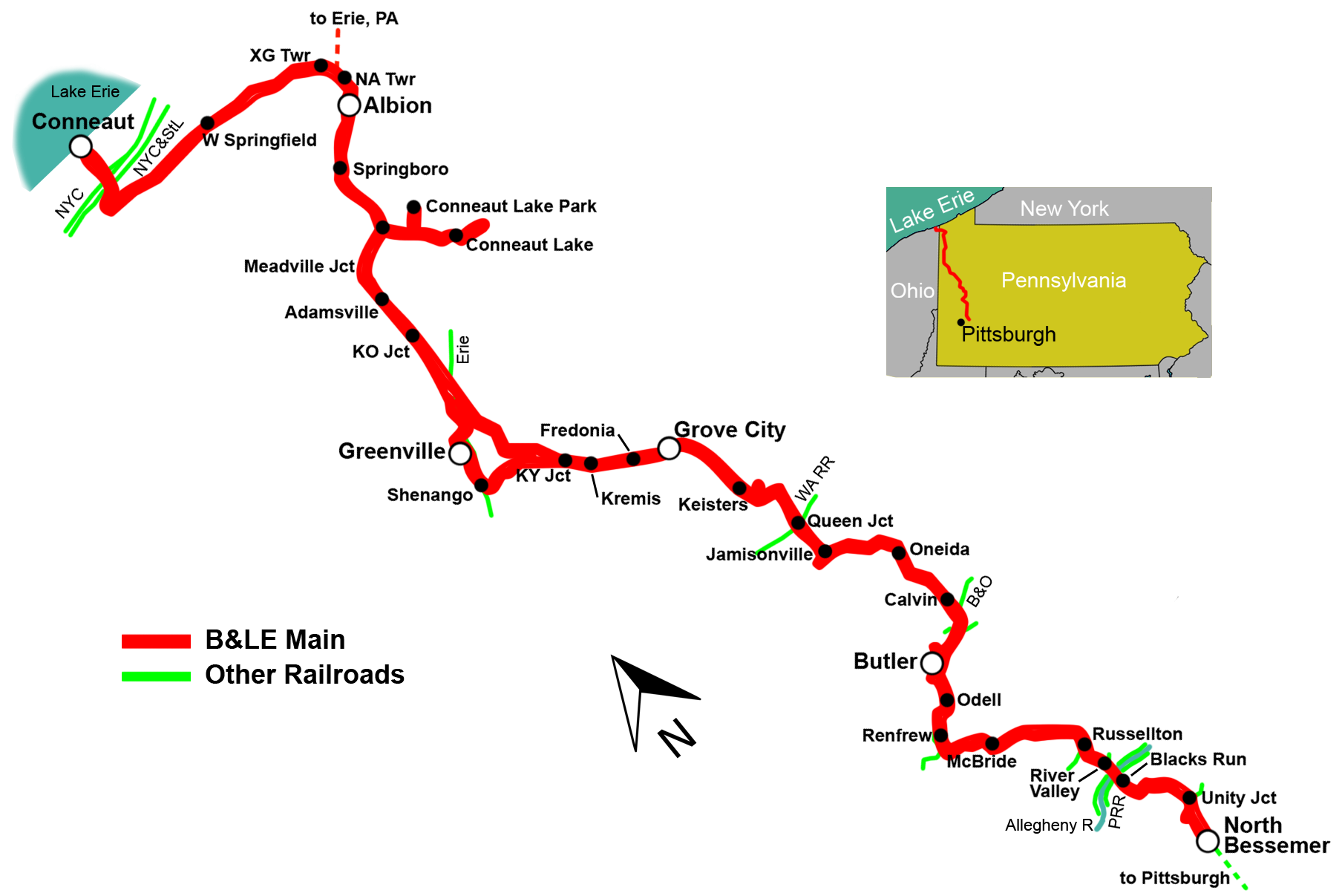
The Route
The Bessemer & Lake Erie route is represented in Train Simulator as it would have appeared in the 1920s. Like the prototype railroad, it runs from Conneaut to North Bessemer, a suburb of Pittsburgh. Along the way, there are numerous interchange and crossing points with other railroads such as the New York Central, the Pennsylvania, and the Erie. The right-of-way is fairly level, but the surrounding hilly terrain forces it to follow an almost constant series of curves.
Conneaut (pronounced KONNY-aught), the northern terminus of the railroad, is the site of four gigantic Hulett unloaders which remove iron ore from incoming lake freighters. A long, moveable bridge crane is also used to manage the large ore-storage yard and to fill a steady stream of southbound ore hoppers during the winter. Conneaut also features several Brownhoist limestone loaders, and a McMyler coal-dumper/ship-loader. Three of the Huletts are fully animated and are set up for interactive car loading. Hopper cars can be moved into position under them using steam locomotives or electric poling trams. You'll also find an interactive coal unloading ramp and a small locomotive service and maintenance facility at Conneaut. The other industrial equipment at Conneaut is represented for historical purposes only.
Continuing southward, our next major point of interest is the yard complex at Albion. Here, a branch line (not modeled) connects to the Nickel Plate main giving the B&LE trackage rights into Erie, Pennsylvania. At Meadville Junction you can take a passenger train to Conneaut Lake Park and watch the animated amusement rides in action (except for late at night and in the winter). Greenville is the site of B&LE's maintenance and repair complex, including a 17-stall roundhouse and a 25-stall erecting shop served by a 450 ft. transfer table.
Arriving in Butler, we marvel at the extensive Standard Steel complex, including facilities for steel production and steel product manufacture; railroad car and railroad car parts production; and automobile production.
Nearing the end of the line, we cross the Allegheny River on a scenic 2,300-foot-long steel bridge 160 feet above the water level. Not far beyond is North Bessemer which is technically the southern end of the B&LE and the location of a large interchange yard. At the south end of the yard the tracks converge to a single track, continuing into a tunnel as the Union Railroad.
Locomotives and Rolling Stock
During the steam era, the B&LE owned a variety of locomotive types. The B&LE package includes a "Santa Fe" type 2-10-2 for general haulage duty, and a "Six-Coupled" 0-6-0 for yard switching.
Santa Fe Type 2-10-2
The B&LE owned 25 coal-fired "Santa Fe" 2-10-2 steam locomotives. All were built by Baldwin beginning in 1916, including 19 D-1-A class, as modeled here. These locomotives were built for tractive power rather than speed, hauling heavily laden ore and coal trains over the full route. The locomotives were equipped with a Street mechanical stoker, and a Vanderbilt-style tender.
Cab Controls
Six-Coupled Type 0-6-0
During the turn-of-the-century era, the B&LE owned eleven coal-fired "Six-Coupled" 0-6-0 steam locomotives. The final seven 0-6-0s, modeled here, were built by Baldwin beginning in 1909. They were used primarily for switching duty in the yards, assembling heavily laden ore and coal trains. Though the Baldwin delivery included a sloped-back tender, a conventional tender is also included for variety.
Cab Controls
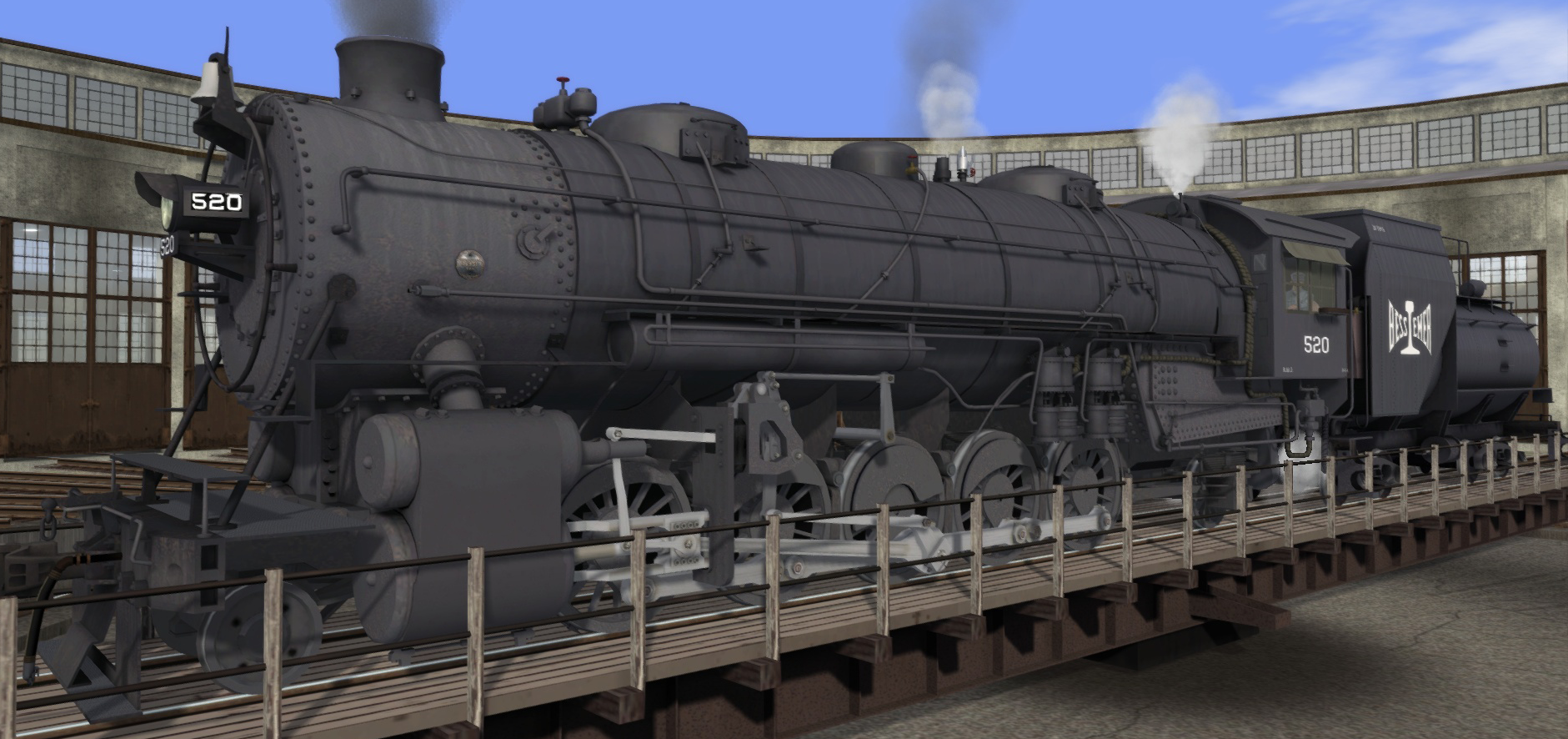
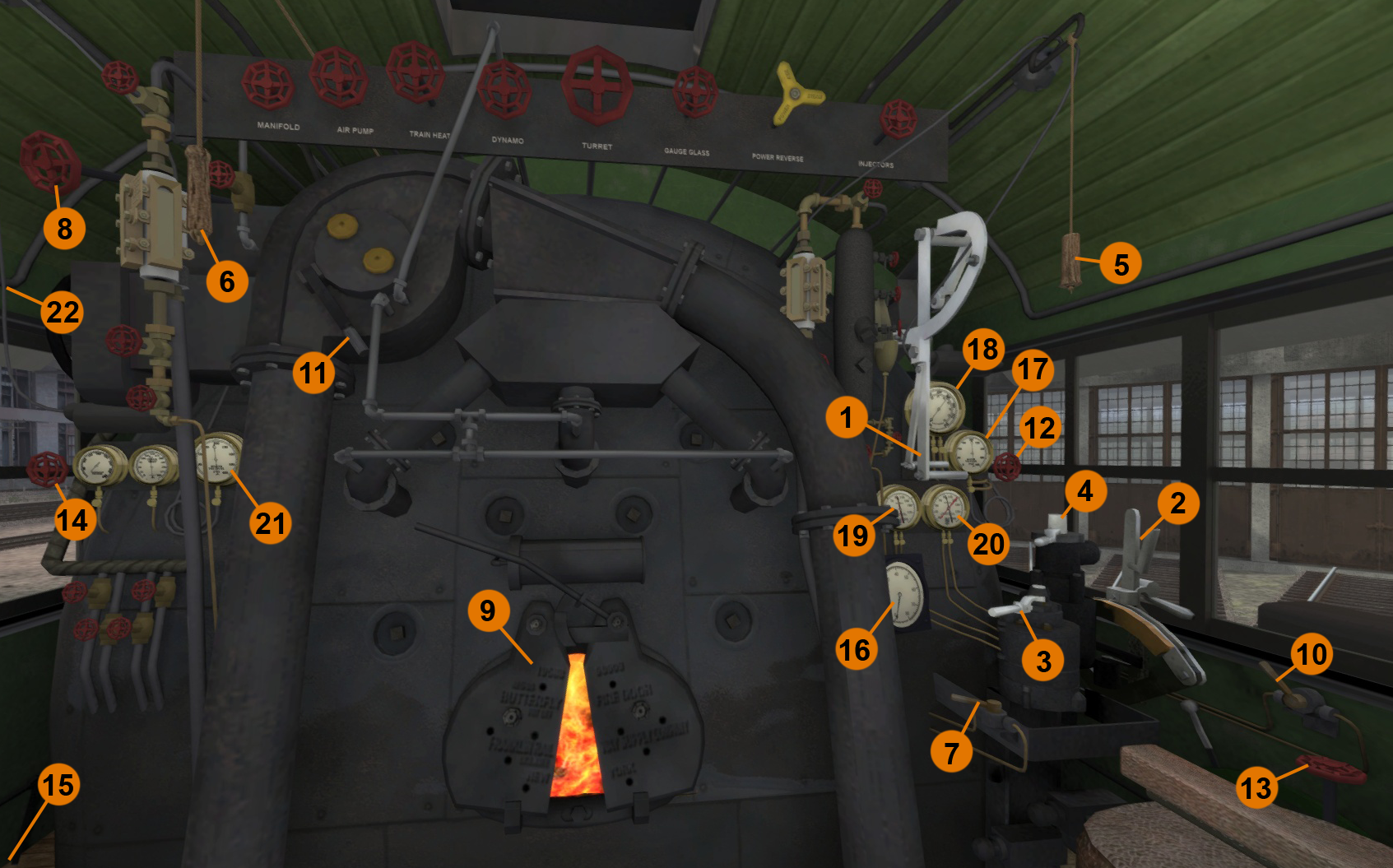
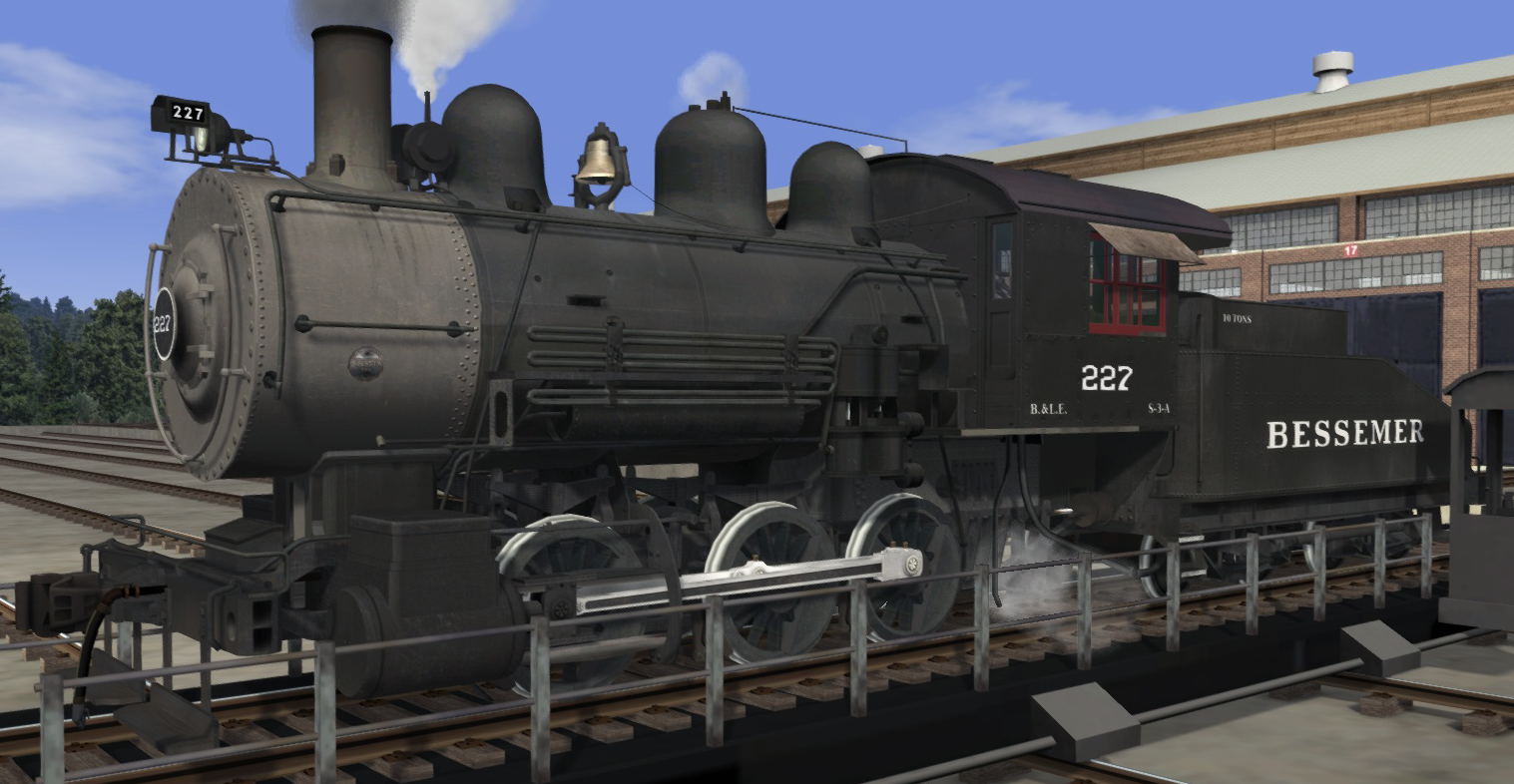
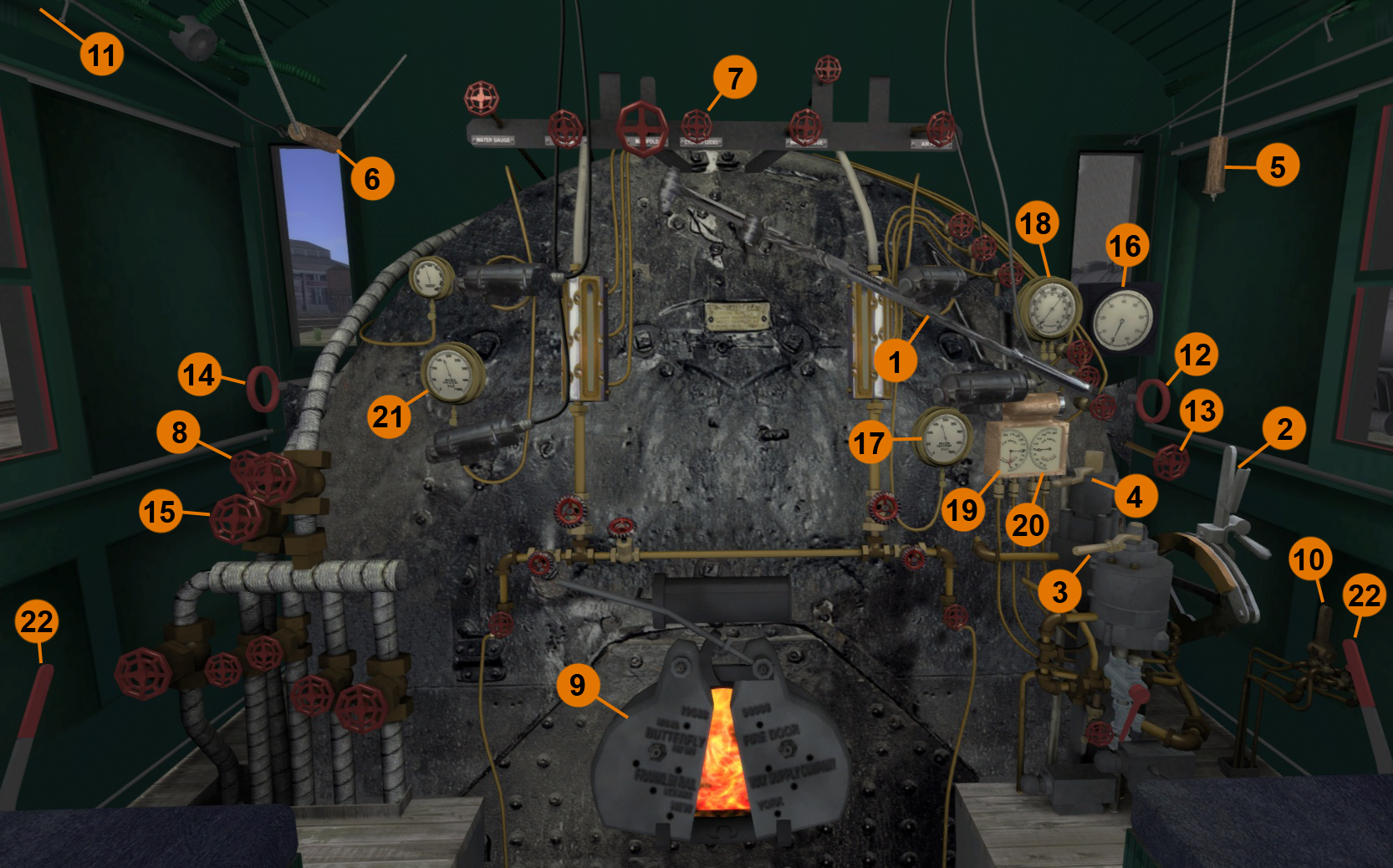
Disclaimer: All locomotive simulation controls use standard algorithms provided in the core code that ships with Train Simulator. No attempt has been made to override or augment these controls by means of scripting or other methods.